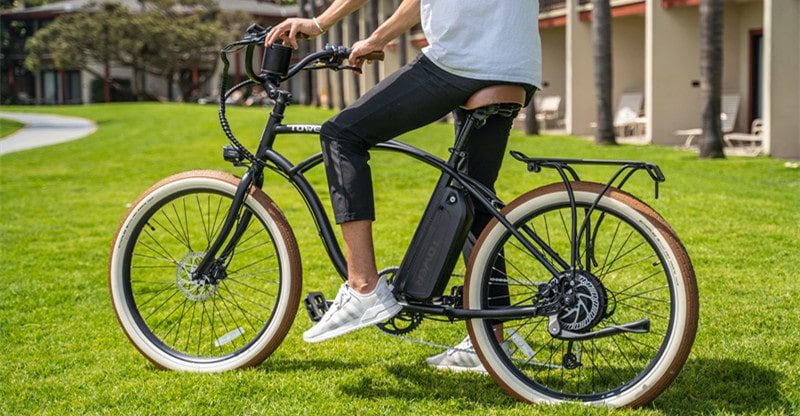The rise of e-bikes has made urban commuting, mountain biking, and leisurely rides more accessible and enjoyable. With the market exploding with options, finding the perfect e-bike to suit your lifestyle might seem daunting. This guide will walk you through the essential considerations to ensure you pick the best e-bike tailored to your needs.
1. Determine Your Purpose
Begin by asking: Why do you want an e-bike?
- Commuting: Look for e-bikes designed for city streets, featuring lights, fenders, and a carrier rack.
- Mountain Biking: Opt for e-MTBs (electric mountain bikes) with robust suspensions.
- Casual Riding: City or cruiser e-bikes are perfect for relaxed, everyday rides.
2. Choose the Right Motor Location
E-bikes generally have three motor placements:
- Hub Motor: Located in the wheel’s hub, suitable for flat terrains.
- Mid-Drive Motor: Positioned at the pedals, offering better balance and performance on hilly terrains.
- Front Hub Motor: Provides a pull rather than push sensation.
3. Battery Life Matters
Consider how far and how often you’ll ride:
- Short Commutes: A battery offering 20-30 miles on a full charge may suffice.
- Long Rides: Look for batteries that promise 60-80 miles.
- Also, think about battery replacement costs and charging time.
4. Frame Size and Style
Your e-bike should fit you comfortably:
- Frame Size: Ensure your feet can touch the ground when seated.
- Step-Through Frame: Offers easier mounting and dismounting.
5. Consider Weight and Portability
If you live in an apartment or frequently take public transport:
- Lightweight Models: These are easier to carry upstairs or on a bus/train.
- Folding E-Bikes: Ideal for those short on storage space or who commute via mixed modes of transport.
6. Braking System
Two main types of brakes are used in e-bikes:
- Disc Brakes: Suitable for rough terrains, offering more stopping power.
- Rim Brakes: Ideal for casual riders and are typically less expensive.
7. Range of Gears
The terrain you’ll be riding on determines the number of gears you’ll need:
- Hilly Terrain: More gears offer flexibility in climbing.
- Flat Terrain: Fewer gears are sufficient.
8. Additional Features
Depending on your budget and preferences, consider:
- Integrated Lights: For those who commute in the dark.
- LCD Display: To track speed, battery life, and distance.
- Throttle Control: Allows you to ride without pedaling.
9. Price Range and Warranty
E-bikes can range from a few hundred to several thousand dollars:
- Set a Budget: But remember, you often get what you pay for.
- Warranty: A good warranty period (typically 2+ years) can be indicative of the e-bike’s quality.
10. Test Ride Before Buying
Finally, always take an e-bike for a test ride. It’s the best way to ensure it feels right and meets your expectations.
Conclusion
Selecting the right e-bike involves balancing your needs, budget, and the features offered. By considering the points above, you’ll be well-equipped to make an informed choice and enjoy the numerous benefits of e-biking tailored to your lifestyle. Safe riding!


